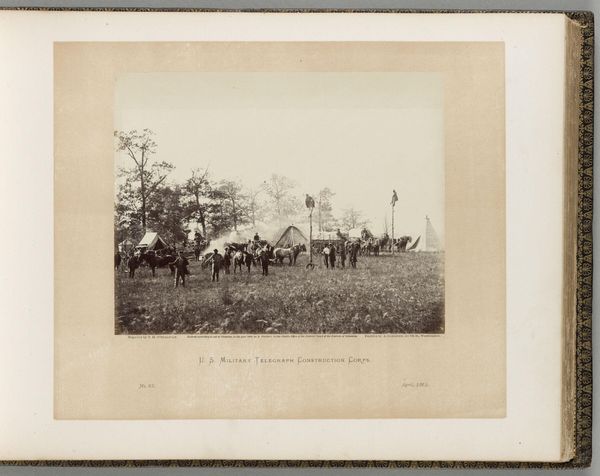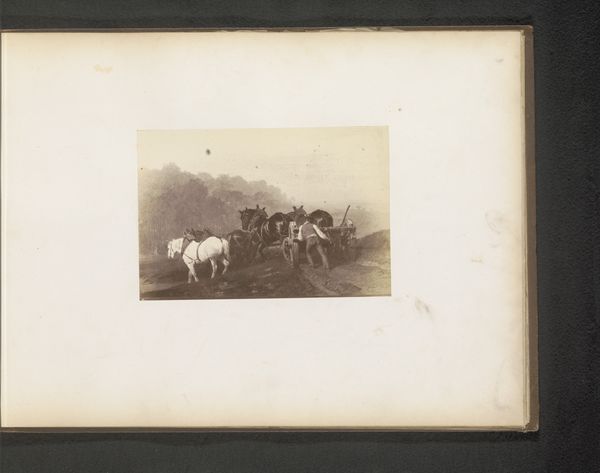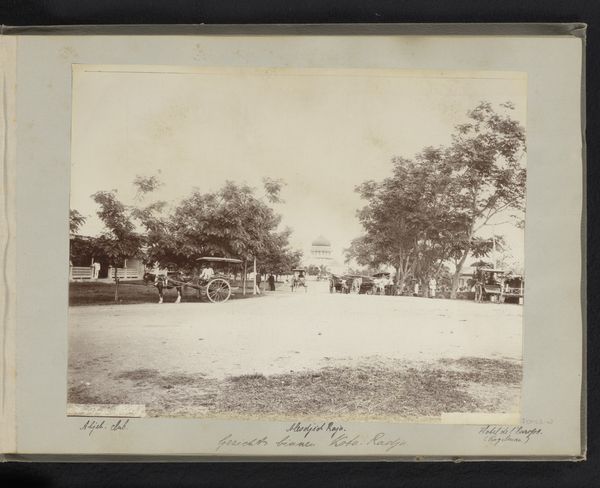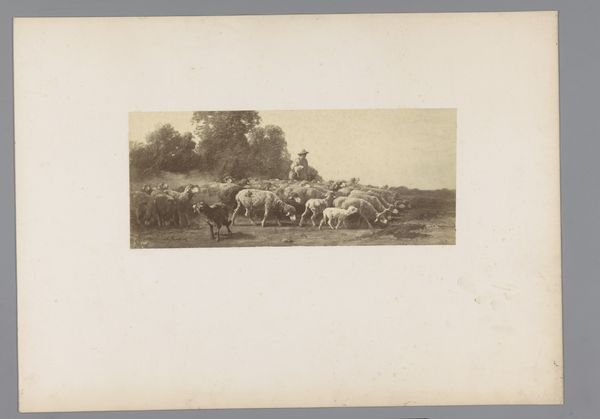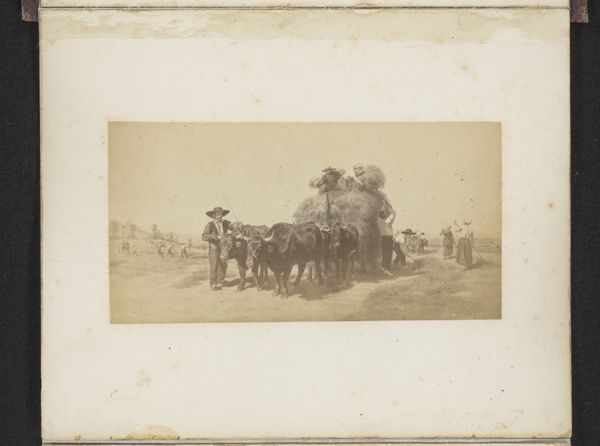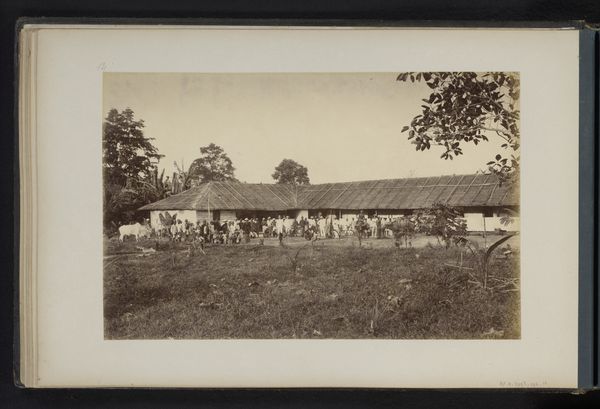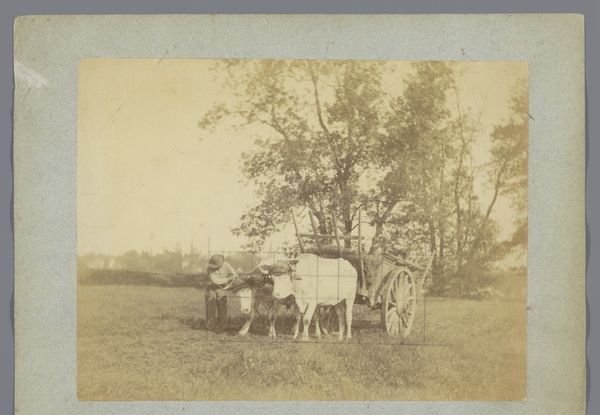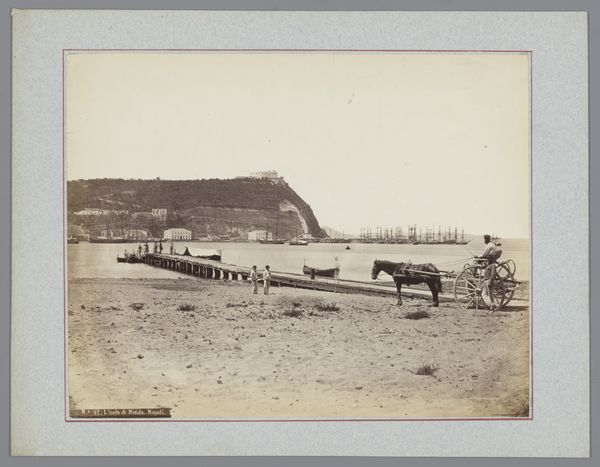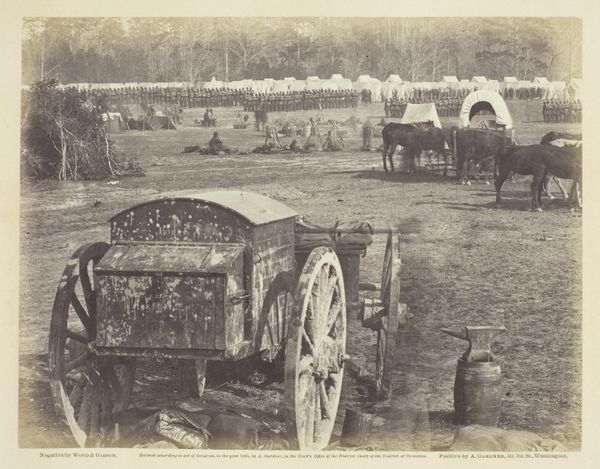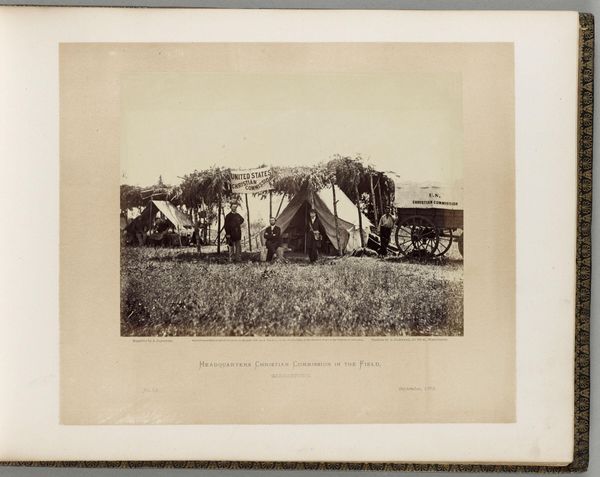
Militairen tijdens een oefening in Tandjong-Poera, Sumatra c. 1890 - 1900
0:00
0:00
heinrichernstco
Rijksmuseum
photography, gelatin-silver-print
#
portrait
#
natural tone
#
landscape
#
photography
#
gelatin-silver-print
Dimensions: height 265 mm, width 355 mm
Copyright: Rijks Museum: Open Domain
Curator: What an intriguing tableau. We're looking at a gelatin silver print entitled "Militairen tijdens een oefening in Tandjong-Poera, Sumatra," which translates to "Soldiers During an Exercise in Tanjung Pura, Sumatra." It was created around 1890 to 1900. Editor: It's remarkably still. Considering the subject matter, there's an almost unnerving calm in the composition. It feels more posed than captured. What’s going on behind the visual frame? Curator: Exactly. These carefully arranged groups of soldiers amidst the Sumatran landscape speak volumes. The act of photographing itself becomes a statement of colonial power. The military exercises weren't just about readiness; they were also demonstrations of control and strength projected onto the local population. Editor: So, it’s staged… but not *just* for the camera. These exercises are a performance of power, and the photograph is documentation intended to be circulated within certain political circles. It’s fascinating to consider the photograph’s political afterlives. How might those images be interpreted now? Curator: I am drawn to how this photo exists as a piece of propaganda to create cultural narratives surrounding colonisation. It presents a composed scene with little hints of hardship, potentially intending to generate nostalgia among those stationed there, and maybe even enticing fresh recruits with a promise of noble purpose in far-off lands. Editor: Right, and that manufactured nostalgia is key. It erases the violence inherent in the colonial project, reducing it to a series of ordered landscapes and disciplined figures. The lack of dynamic movement contributes to this feeling, and is a psychological tool for a story they want to create. Curator: The seemingly simple arrangement—the groups of men against the landscape, the crisp light on the buildings—serves to normalize and almost aestheticize the act of military presence in someone else’s homeland. These sorts of images, shared among people, establish the framework to influence opinions about cultural concepts. Editor: Precisely. What’s remarkable is that, despite the attempts at erasure, this image still vibrates with the tensions of the time. It's a powerful reminder of how deeply implicated even seemingly neutral images are in complex social and political power structures. It helps to explore colonisation and the role that images played back then, versus now. Curator: An exercise in memory and continued meaning. Editor: Indeed. It’s like excavating the past through a photograph, finding that the photograph still digs its claws into us.
Comments
No comments
Be the first to comment and join the conversation on the ultimate creative platform.
